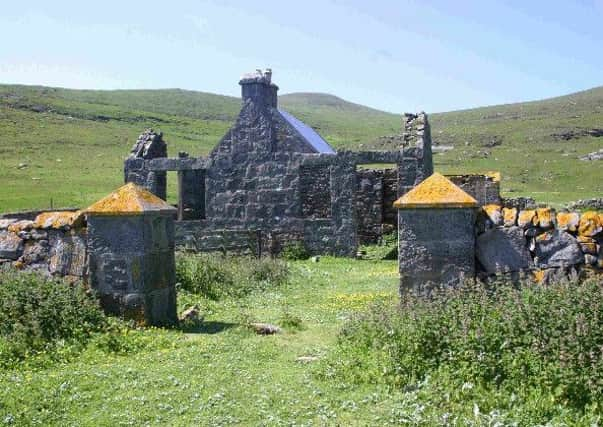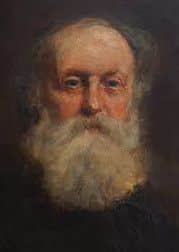The Hebridean island wiped out by a plague


When a boy was sent to Mingulay to check the condition of the islanders, he found the people all dead in their homes - and he was forbidden to leave given fears the disease had set in his stomach.
After surviving on sheep that he killed with his pocket knife, he was to go on and rebuild the island, with the land given free to his father to compensate for not letting the boy home.
Advertisement
Hide AdAdvertisement
Hide AdThis is one version of the story at least, with various accounts of the desperate episode in existence, some which place the outbreak on Mingulay more than 200 years apart.


The version of storyteller and singer Nan MacKinnon, also known as Nan of Vatersay, places the illness, which reportedly killed 10 people, to the 14th Century.
MacKinnon, whose work has been recorded by Edinburgh University’s Scottish Studies department, said:
“MacNeil of Barra, who was in Eoligarry House at the time, was wondering why the Mingulay people weren’t coming over to visit Barra as usual.


Advertisement
Hide AdAdvertisement
Hide Ad“So he sent a boat over to Mingulay to investigate, but when the boat arrived at Mingulay, there was no sign of life on the island, so the older men who were on the boat ordered a young lad of 17 to go ashore and find out what was wrong.
The account added: “The boy did as he was told. He entered all the houses in the village, but they were all dead.
“He was in such a state after finding them dead that he called out at the pitch of his voice, before he got near the boat, ‘Oh God, they are all dead.”
MacKinnon’s account details how one of the older men called out to him ‘if it’s a plague that killed them all you’ve got a stomach of it already, so you’d better stay where you are.”
Advertisement
Hide AdAdvertisement
Hide AdDespite begging to get back on the boat, the boy remained on the island for six weeks.
His father, Kenneth MacPhee, was furious that MacNeil refused to say what had happened to his son and threatened to pull his house down.
MacKinnon continued: “So the chief had to be honest about it all.”
It is claimed that MacNeil told MacPhee to “pick his own men” and go to Mingulay “where the island would be theirs free of rent as long as any of his generation lived.”
Advertisement
Hide AdAdvertisement
Hide AdThe boy, meanwhile, had survived on the sheep that he had killed with his pocket knife and on shellfish.
The hill that he is said to have climbed to seek out passing ships is called MacPhee’s Hill to this day.
Ben Buxton, in Mingulay, and Island and its People, published by Birlinn Books, disputed two key facts in Mackinnon’s account of the plague.
The first was that the MacNeils did not move to Eoligarry until the 18th Century and that the island was in no way rent free until 1840, when John Gordon of Cluny bought the land from the MacNeil family, who by this time were riddled with debt.
Advertisement
Hide AdAdvertisement
Hide AdMacKinnon, in her account, also linked Kenneth MacPhee to the Eigg Massacre and said he was just a “baby in arms” when his father fled the island around the time of the mass killings, said to have happened around 1577.
A further account of the deadly outbreak on Mingulay was recorded by folklorist Alexander Carmichael, which possibly originated from storyteller Roderick MacNeil, nick-named Ruairidh an Rùma.
Carmichael’s work has also been documented by Edinburgh University.
The Carmichael Watson Project noted that, although the word ‘plague’ is not used in the story it may be assumed that such an outbreak took place at some point during the 16th Century, just as a similar outbreak of smallpox decimated the population of St Kilda during the late 1720s.
Advertisement
Hide AdAdvertisement
Hide AdCarmichael’s version stated that the young MacPhie - the spelling stated in the account - was left on the island for seven weeks after going to investigate.
To survive, he went to a hill opposite Berneray, where the sheep sheltered from the snow. He used sheep skin to make a covering and frozen sheep fat as good.
MacNeil returned and set fire all to all the huts where the bodies lay and asked MacPhie if he was “committed” to living on Mingulay.
He said he was, and would choose three of four “trusty friends” to build new huts on the islands.
Advertisement
Hide AdAdvertisement
Hide AdThe account suggests that these were later washed away by a high tide, when a “sea came and left not one stone.”
Mingulay was eventually repopulated but following decades of tumultuous depopulation and survival, it was finally abandoned in 1912.
